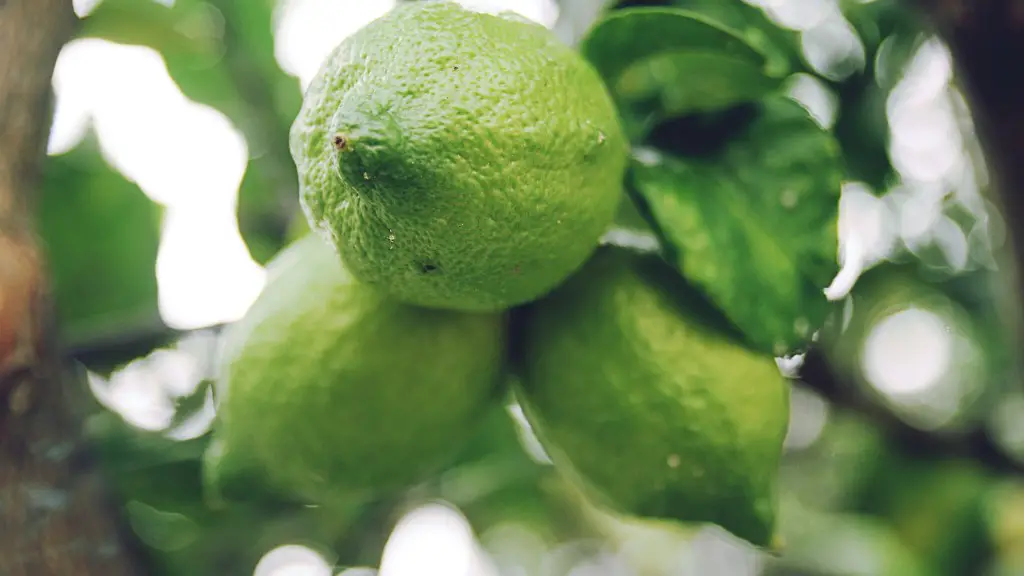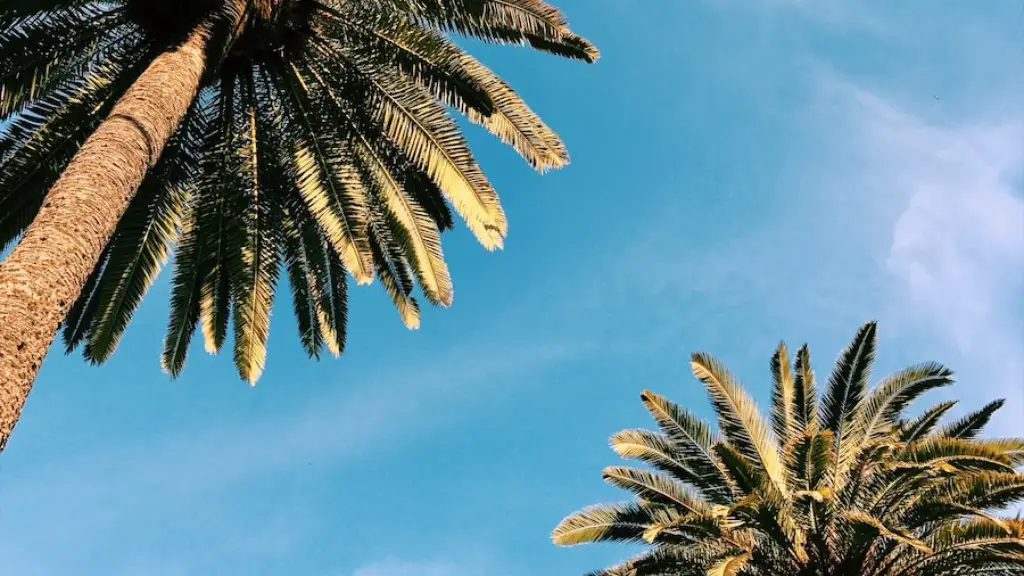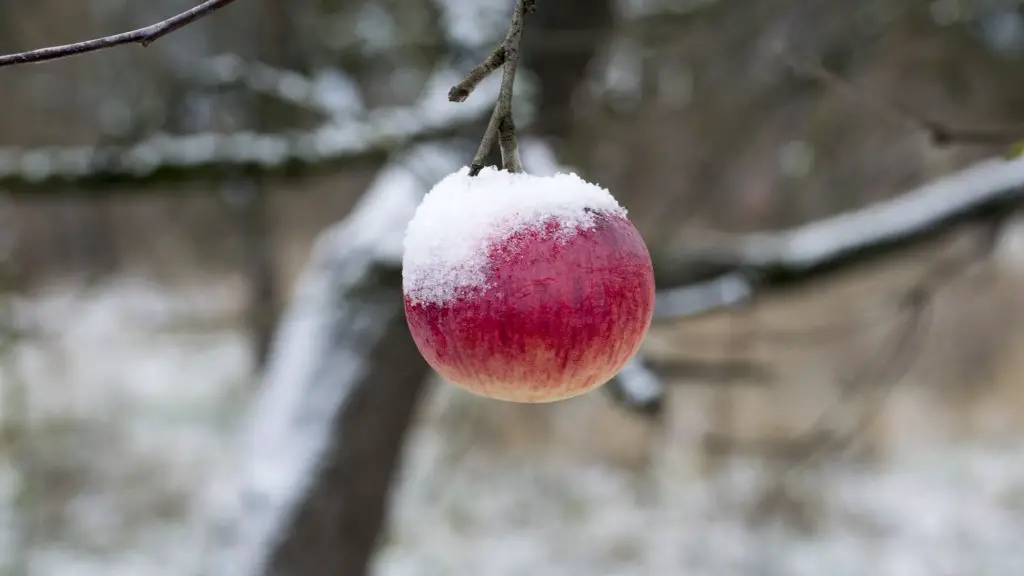Meyer Lemon trees are one of the most popular fruiting trees grown in the home landscape. The answer to what size pot to plant a Meyer Lemon Tree depends on the size of the tree and the type of soil it is planted in. Meyer Lemon Trees are generally either grafted onto an existing rootstock, or grown from seed. It is important to choose the correct size pot to ensure the tree thrives.
When selecting a pot for a Meyer Lemon Tree grafted on to a rootstock, it is recommended that the pot is at least 24 inches wide and 20 inches deep. This size pot will allow the root system to spread and establish itself properly. The rootstock for most Meyer Lemon Trees is either Citrus volkameriana or Citrus Limon. It is important to choose a pot that is not too shallow, as the root system will be affected by the lack of space.
When growing a Meyer Lemon Tree from seed, the pot size should be proportionate to the size of the tree. For a seedling that is approximately 8 inches tall, a pot size of 12 inches wide and 10 inches deep is ideal. As the tree grows, it is important to repot the tree into a larger pot to match the size of the tree. It is best to choose a pot with a drainage hole, as this will help prevent water-logging and promote healthy root growth.
The choice of soil is also important when choosing the correct size pot for a Meyer Lemon Tree. Sandy soils are best for Meyer Lemon Trees, as they allow for good drainage and aeration. A potting mix that is high in organic matter and nutrient-rich is also recommended. This will provide the tree with the nutrients it needs for optimal growth and fruiting. It is important to ensure that the soil does not become too wet or dry, as this could damage the roots of the tree.
When choosing a pot to plant a Meyer Lemon Tree, it is important to remember that larger pots are better. This will allow the root system to spread out fully and develop a strong foundation. The pot should also be chosen to match the size of the tree, and the soil should be a high quality potting mix. With proper planting and care, a Meyer Lemon Tree can produce an abundance of juicy, flavorful fruit.
How to Repot a Meyer Lemon Tree
Repotting a Meyer Lemon Tree is an important part of providing the best care for the tree and helping it to grow and produce fruit. In general, repotting a Meyer Lemon Tree should take place every two to three years. This will ensure that the tree has enough space for its root system to grow and respire. A larger pot is generally used for repotting, with a size of 24 inches wide and 20 inches deep.
Before repotting a Meyer Lemon Tree, it is important to prepare the new pot. To do this, a shallow layer of potting mix should be spread at the bottom of the pot. A slow-release fertilizer can also be added to provide nutrients to the tree as it grows. The tree should also be carefully removed from its current pot. To make sure that any soil stuck to the roots is loosened, the root ball should be placed in a bucket of water until the soil is saturated.
Once the new pot has been prepared and the tree has been removed from its old pot, the tree can then be placed in its new home. The soil should be firmly packed around the roots and the tree should be given water immediately after planting. Repotting will encourage root growth and introduce new nutrients to the soil. Regular fertilization should also be done to provide essential nutrients to the tree and to encourage fruit production.
Watering and Pruning a Meyer Lemon Tree
Watering and pruning a Meyer Lemon Tree are important parts of providing proper care and achieving optimal growth. To properly water a Meyer Lemon Tree, it is important to ensure that the soil does not become too dry or soggy. Check the soil every few days to ensure that it feels uniformly moist and give the tree a good soaking if necessary. If the soil is too dry, the tree could become stressed. If it is too wet, the roots could suffocate.
Pruning a Meyer Lemon Tree is an essential part of its health and growth. The tree can be pruned at any time during the year to shape it and promote healthy growth. Pruning should be done with sharp tools to ensure clean cuts. Avoid removing large branches, as these support the tree. Instead, remove any small branches that are obstructing the tree’s growth or thinning out the overall shape.
Fertilizing a Meyer Lemon Tree
Fertilizing a Meyer Lemon Tree is an important part of providing proper care and ensuring that the tree has adequate nutrition. If a slow-release fertilizer that is specifically designed for citrus trees is not available, then a balanced general purpose fertilizer can be used. It is important to avoid over-fertilizing, as this could damage the tree and encourage unwanted leaf growth.
Fertilizer should generally be applied every two to four months during the growing season. During the winter, it is important to reduce the amount of fertilizer given to the tree. A small amount of fertilizer can still be applied during this time, but it should be done less frequently. It is best to apply the fertilizer around the base of the tree, avoiding the stem and leaves. This will ensure that the fertilizer is taken up by the root system.
Harvesting Meyer Lemons
Harvesting Meyer Lemons is a rewarding part of owning a Meyer Lemon Tree. Lemons should be left to ripen on the tree in order to reach their full flavor potential. As the fruit ripens, it will turn yellow and become sweeter. When the fruits are about the size of a lemon, they can be picked from the tree. Lemons can be picked when they are still green and will continue to ripen off the tree without any loss of flavor.
When harvesting Meyer Lemons, be sure to use caution when picking the fruits as they are sensitive and can bruise or become damaged easily. Use a pair of garden shears or a sharp knife to harvest the fruits and avoid pulling them off the tree. It is best to harvest any diseased or rotten fruits immediately to prevent them from spreading to other parts of the tree.
Pest Control for Meyer Lemon Trees
Pest control is an important part of maintaining healthy Meyer Lemon Trees and preventing diseases from spreading. Common pests of Meyer Lemon Trees include aphids, scale insects, and spider mites. These pests can suck the sap from the leaves and stems of the tree and weaken the overall health of the plant. If pests are detected, it is best to remove them from the tree with a soft cloth and mild soap solution.
If the pests are numerous and cannot be removed manually, then it is best to contact a professional for assistance. Neem oil can also be used as a natural pest control solution. This solution can be applied to the leaves of the tree to prevent pests from laying eggs and spreading. It is important to always read and follow the instructions on the product label before use.



